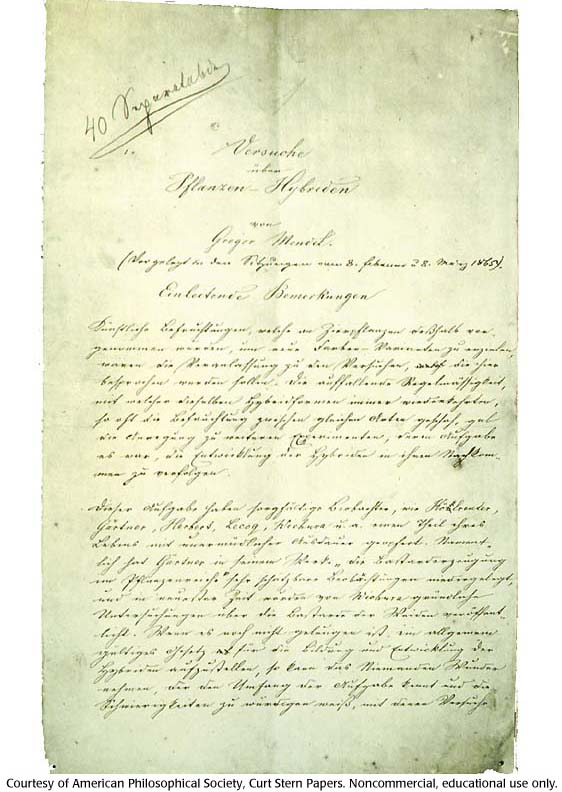Gregor Mendel Manuscript, 1865

First page of Mendel's paper (German), Experiments in Plant Hybridization, in his handwriting, 1865.
plant hybridization, hybrid, gregor mendel, gallery 3, handwriting, 1865, manuscript
- ID: 16172
- Source: DNALC.DNAFTB
Related Content
16173. Gallery 3: Gregor Mendel 's Experimental Results
Mendel's notes on some of his pea plant results in his handwriting.
16156. Gallery 2: Gregor Mendel with fellow Monks, 1862
Gregor Mendel and fellow monks, around 1862. Mendel is holding a fuschia sprig - a plant with which he made hybrids.
16170. Genes don't blend.
DNAFTB Animation 3: Gregor Mendel explains that breeding short and tall pea plants didn't produce a medium-sized plant.
16177. Gallery 3: Gregor Mendel 's Microscope
Mendel's microscope.
16189. Biography 4: Gregor Mendel (1822-1884)
The Unappreciated
16174. Gallery 3: Gregor Mendel 's Experimental Leaf Specimen
A leaf from Gregor Mendel taped to a card.
16158. Gallery 2: Gregor Mendel, 1864-65
Mendel and the teaching staff at the Brno modern school, 1864-65.
16002. Gregor Mendel and pea plants
Children resemble their parents.
16208. Concept 6: Genes are real things.
The study of the cell and chromosomal behavior confirmed Mendel's work.
16224. Biography 6: Erich von Tschermak-Seysenegg (1871-1962)
Hugo de Vries, Carl Correns and Erich von Tschermak-Seysenegg were the three scientists who rediscovered Mendel's laws in 1900.












